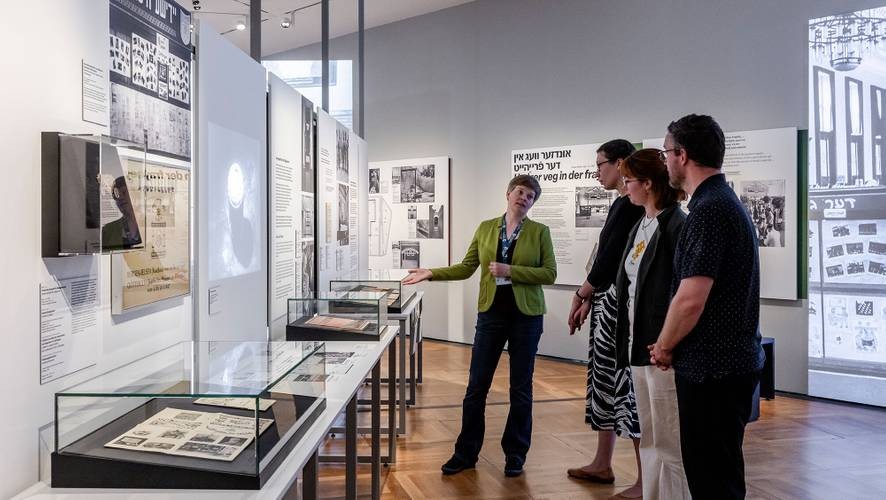At the height of its power, National Socialist Germany ruled over almost all of Europe. Some 230 million people in what are now 30 countries lived under German occupation. How did the postwar societies process their experiences of violence and destruction resulting from the Second World War and the concurrent Nazi occupation? A previously overlooked but historically influential form of coming to terms with this desolation are the exhibitions that were organised throughout Europe immediately after the war. In times of social hardship, political instability, enduring violence, and uncertain future, they aimed to document and visualise the consequences of the Holocaust and the Nazi crimes.
With “On Displaying Violence: First Exhibitions on the Nazi Occupation in Europe, 1945–1948” (24 May–23 November 2025), the Deutsches Historisches Museum traces for the first time the history of this pan-European phenomenon, using the examples of early exhibitions in London, Paris, Warsaw, Liberec and Bergen-Belsen. The DHM exhibition is presented in cooperation with the Documentation Centre “German Occupation of Europe in the Second World War”. It is the view of the project that a joint European remembrance, and thus a joint European future, depends to a great degree on the shared knowledge of the history of the German occupation.
The exhibition focuses on the different forms and presentations with which the exhibition organisers – most of them victims of Nazi persecution and Holocaust survivors – took up the themes of violence, resistance and perpetrators, as well as the loss of cultural heritage. This throws light on the different ideas about the future that were reflected in the early exhibitions. Rooted in the respective local and national contexts, the different visual languages of the time are analysed and the sources compared. The motivation of the participants and the effect of the exhibitions are examined, some of which travelled throughout Europe. Original objects, photographs, films, documents, artworks and multimedia presentations give the visitors a greater understanding of the challenges and backgrounds of this “first look back.”
German Historical Museum, Hinter dem Gießhaus 3, 10117 Berlin
Organiser: German Historical Museum
